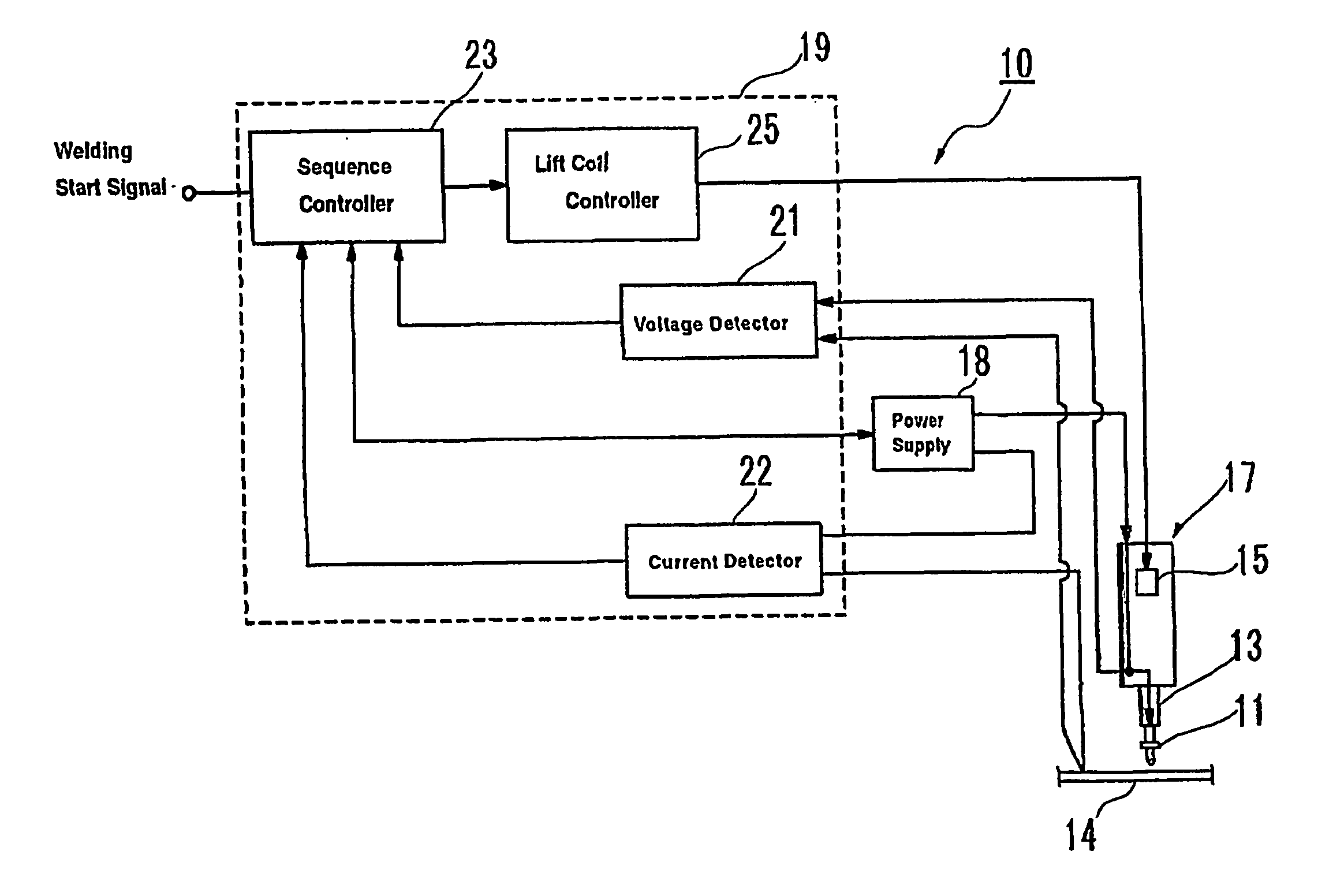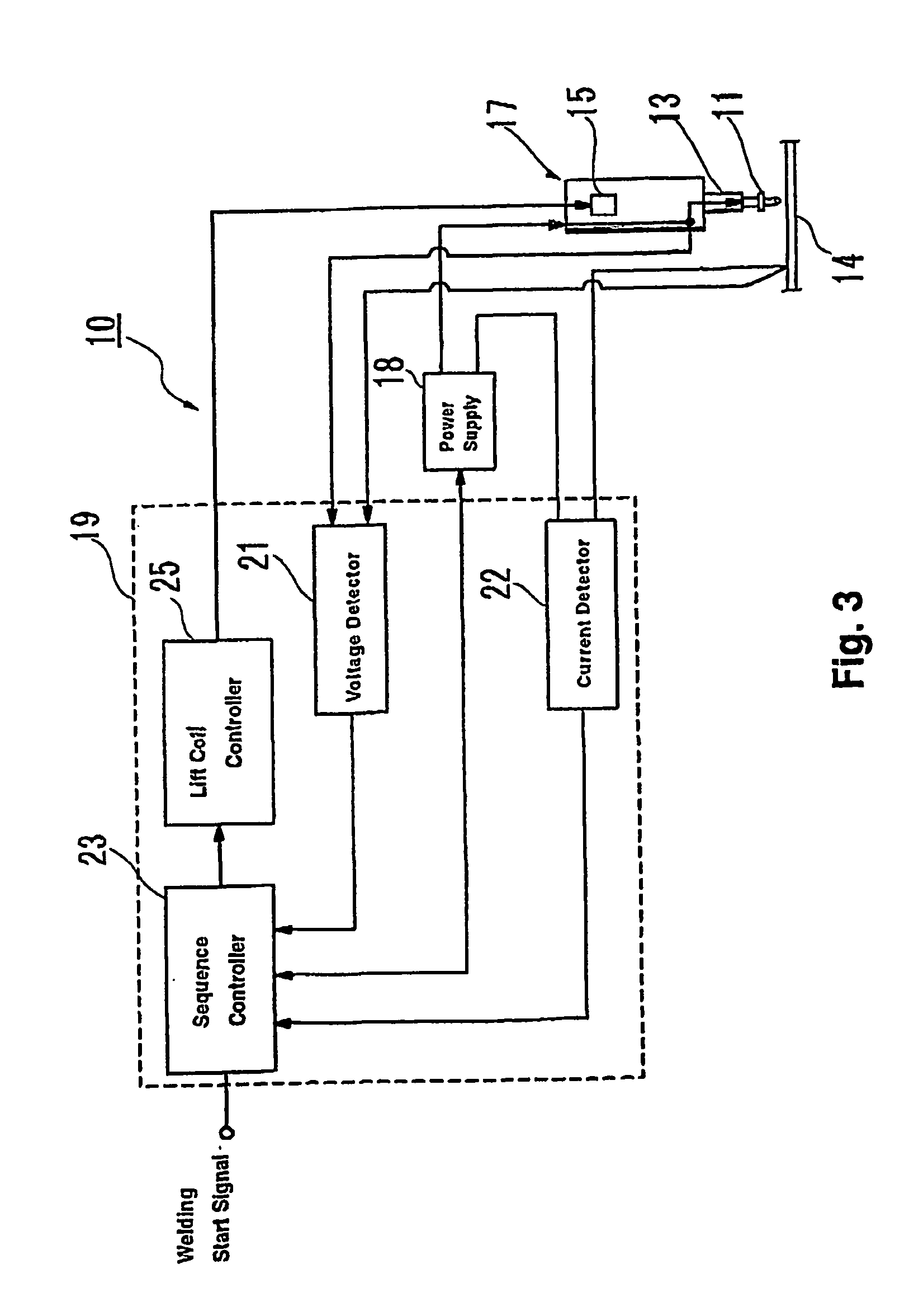Method and device for welding an aluminum-based stud
- Summary
- Abstract
- Description
- Claims
- Application Information
AI Technical Summary
Benefits of technology
Problems solved by technology
Method used
Image
Examples
Embodiment Construction
[0017]The following is an explanation of working examples of the present invention with reference to the drawings. FIG. 3 is a block diagram of the circuit in a welding device 10 for welding an aluminum or aluminum alloy stud to an aluminum or aluminum alloy base material. The stud welding device 10 contains a collet 13 for holding a stud 11 at the tip, a welding gun 17 with a lift coil 15 as the lifting means for lifting the stud 11 held by the collet 13 off the base material 14, and a power source 18 connected to the welding gun to supply a specific amount of power between the stud 11 and the base material 14. It is not necessary, but the stud can also be welded in an inactive gas atmosphere such as an argon gas atmosphere. A stud-surrounding member such as a ferrule (not shown) can be installed on the collet 13 holding the stud.
[0018]A control device 19 is connected to the power source 18 and the welding gun 17. The stud welding device 10 is a so-called drawn-arc stud welding dev...
PUM
| Property | Measurement | Unit |
|---|---|---|
| Time | aaaaa | aaaaa |
| Time | aaaaa | aaaaa |
| Time | aaaaa | aaaaa |
Abstract
Description
Claims
Application Information
 Login to View More
Login to View More - Generate Ideas
- Intellectual Property
- Life Sciences
- Materials
- Tech Scout
- Unparalleled Data Quality
- Higher Quality Content
- 60% Fewer Hallucinations
Browse by: Latest US Patents, China's latest patents, Technical Efficacy Thesaurus, Application Domain, Technology Topic, Popular Technical Reports.
© 2025 PatSnap. All rights reserved.Legal|Privacy policy|Modern Slavery Act Transparency Statement|Sitemap|About US| Contact US: help@patsnap.com



